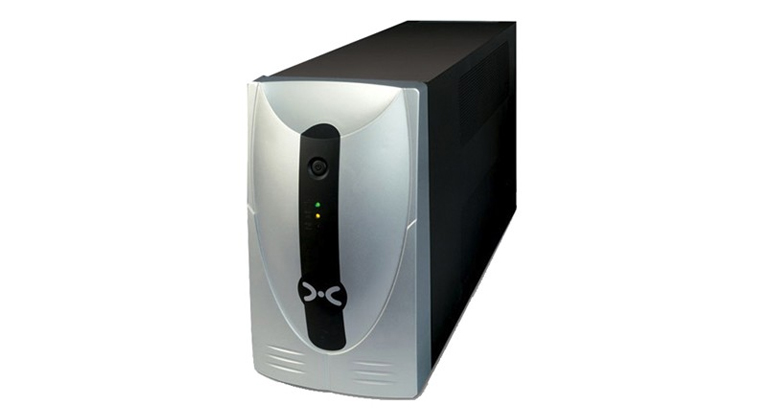We often experience frequent power failures that not only perturbs us but also causes hindrance to a work in progress on our computers. If multiple applications are running and the computer suddenly becomes non-operational due to a power outage, then it is not only harmful to the device but can also lead to data loss and huge downtime. However, by installing an Uninterruptible Power Supply (UPS), a device that provides backup power to a device connected to it when the main power source fails, we can remedy the situation easily. A UPS provides electrical energy for a short time to allow the user to shut down the computer in a safe and proper way, avoiding possible internal damage of the system.
Moreover, a desktop uninterruptible power supply provides protection from power source electrical surges and spikes. It intercepts the surge and provides filtered and clean power so that the computer is not damaged, internally.
How to Choose Desktop Uninterruptible Power Supply?
Here are some of the factors which you need to consider while choosing the right desktop uninterruptible power supply.
1. Power Capacity of the UPS System
While purchasing an Uninterruptible Power Supply, one of the foremost things that needs to be considered is the amount of power this backup power device delivers. The UPS must be capable to supply adequate power that matches the required electrical load of your desktop units (monitor, CPU, keyboard) to keep your computer running and give ample time to save important work and to shut down your computer safely. If you buy a UPS in accordance with the power requirement of your desktop system, then it will effectively provide your device with unrestricted power during an electrical disruption.
The Central Processing Unit (CPU) is the component that needs most of the power supply to function. However, the monitor and other supplementary devices plugged into the CPU can function at lower power.
2. Runtime of the UPS System
Runtime denotes the amount of time the UPS is capable of providing backup power supply to the device connected to it during power outages. It is recommended to choose an Uninterruptible Power Supply device, which has an output watt capacity 20 to 25 percent higher than the total wattage of the desktop unit, including the monitor, CPU, keyboard, and the mouse. You can use a UPS watts calculator to measure the total load before opting for a UPS system.
3. The Type of UPS System You Need
There are basically three types of uninterruptible power supply systems, namely, standby, line interactive, and dual conversion UPS systems.
The standby UPS uses its battery power only when the voltage goes below a certain point, like below 90 volts or completely diminishes. This UPS system is the least expensive one.
The second category of UPS is the line interactive UPS system, which comes with an inbuilt transformer. , and mainly utilized when the Alternating Current (AC) voltage becomes too low or too high, this UPS system uses the transformer to balance the voltage by bringing the voltage back within the target limit when the power voltage drops drastically. A line interactive UPS only uses its reserved battery power during the complete absence of electrical power on the main grid.
The third type of uninterruptible power supply is the dual conversion system, which changes Alternative Current (AC) power into Direct Current (DC) and then again transforms it into AC. This type of UPS must be chosen only if your area faces a lot of interruptions, micro-outages, or sags in the main power line or if your equipment requires sine-wave power.
4. Functions that the UPS Needs to Perform
When you select the type of desktop uninterruptible power supply system, determine whether all the devices connected to your computer are required to function during a power outage or surge. For instance, if you think that you can work without the use of the scanner, speakers, and printer until the main power supply is restored, then you can select a smaller and cheap UPS as a means of your backup power supply.
5. Number of Outlets a UPS System Has
Another vital factor to consider while choosing a desktop uninterruptible power supply is the number of outlets or ports that have been built into it. Most of our desktop workstations consist of more than the monitor connected to the CPU. There are various additional electronic item present such as speakers, printers, wireless routers, a fax machine that is connected and synced to the computer. Therefore, all these additional devices also need to be connected to the uninterruptible power supply system so as to avoid sudden shutdowns during power outages.
All UPSs’ come with outlets. However, the number can vary from one UPS system to another. As a customer, it depends on you as to how many outlets you need in A UPS system. Once you determine the number purchase a UPS system that fulfills your requirement.
In Conclusion
Thus, for installing the appropriate desktop uninterruptible power supply you need to consider the aforementioned aspects to make the right choice. A UPS ensures that your productivity won’t suffer during any power outage allowing you to prevent downtime and work without disruptions. It also saves you from lengthy recovery time of your computer and also the need to feed data repeatedly in case there is power disruption. Thus, for its multifarious advantages, you must install a UPS system for your desktop without any fail.

